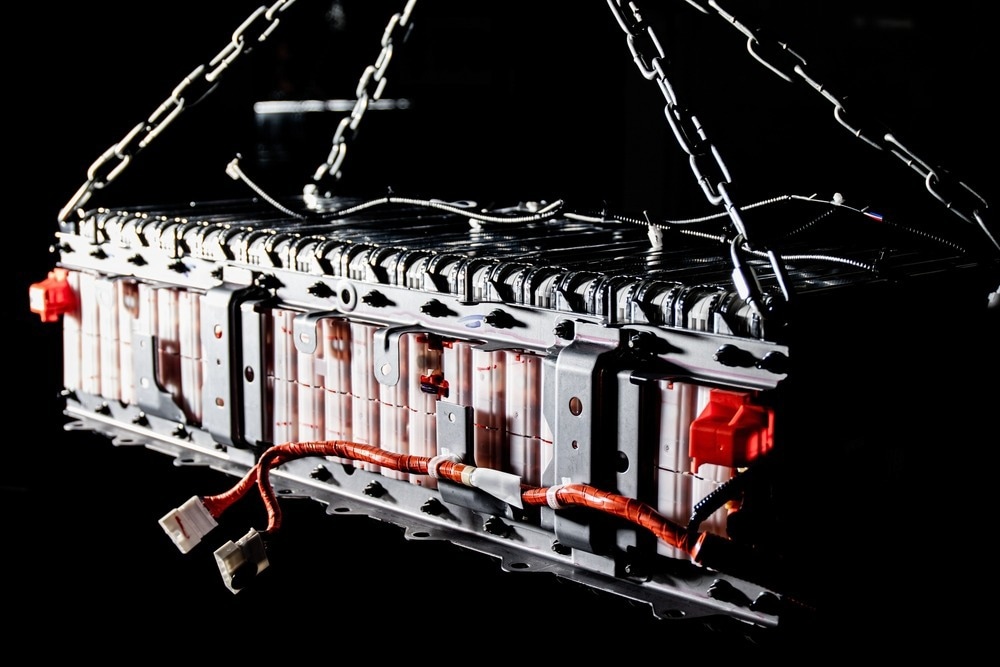In a paper recently published in the open-access journal ACS Energy Letters, researchers reviewed the fundamentals of using aqueous solution chemistries for effective designing zinc (Zn)-ion batteries. They summarized new research concerning methods that reduce water activity and provided insight into the characteristics of aqueous electrolytes in Zn metal batteries (ZMBs) that are governed by molecular-level interactions.

Study: Regulating Water Activity for Rechargeable Zinc-Ion Batteries: Progress and Perspective. Image Credit: P5h/Shutterstock.com
Background
Lithium-ion batteries (LIBs) have attracted widespread attention due to their reliable performance. However, LIBs have raised multiple concerns, including high costs and higher environmental pollution compared to aqueous battery systems.
Despite this, the application of aqueous electrolytes in rechargeable batteries poses further challenges. The practical voltage is capped (1.23 V) due to the restricted electrochemical window of aqueous solutions, which further limits the choice of electrodes and affects the energy density pertaining to the battery systems. Therefore, extensive research has been dedicated to developing the operation window corresponding to the electrolytes.
In contrast to alkaline metal anodes, Zn metal exhibits stability in an aqueous electrolyte environment. Consequently, considerable attention has been given to rechargeable batteries with Zn metal anodes. However, the implementation of ZMBs has always been impacted by high water activity in the aqueous electrolyte. This review evaluated the strategies to regulate water activities in rechargeable ZMBs.
Zinc Surface Chemistry
The aqueous electrolytes for ZMBs are classified into neutral, alkaline, and acidic electrolytes based on their pH. In alkaline solutions, the solubility of Zn can lead to the formation of Zn oxide (ZnO) films on the electrode, which can decrease the effectiveness of the anode. Zn metal anodes in acidic solutions can constantly consume H+, thereby producing H2 gas and leading to safety hazards such as battery swelling. On the other hand, neutral electrolytes could provide more stable conditions for Zn anodes. However, long-term usage of water and aqueous solutions can lead to adverse side reactions due to the thermodynamic instability of Zn.
Electrolyte-Electrode Interactions
Dilute electrolytes contain numerous free-state water molecules which are reduced with increasing salt concentration. High salt concentration in turn decreases water molecule decomposition and forms a stable interphase. This interphase can block the water molecule-zinc anode contact and reduce the chances of H2 evolution. However, concentrated electrolytes incur low ionic conductivity and high viscosity, as well as additional costs, making it highly challenging to implement them in latent energy storage systems.
Various zinc salts are soluble in ionic liquids (ILs) with reversible Zn dissolution achievable in these electrolytes. As a result of the absence of water molecules in ILs, considerable electrochemical stability was achieved while suppressing Zn anode corrosion. These electrolytes, however, have several demerits. Most cathodes in ZMBs undergo Zn2+/H+ co-extraction, thus limiting the application of the electrolytes to a few cathodes. The organic solvent is often ineffective in dissociating the salt cation-anion pair.
Water activity can be significantly reduced by ligands via the regulation of the hydrogen-bonding structure, which subsequently prevents water decomposition in aqueous electrolytes. A study by Cui and their team proposed the usage of a deep eutectic solvent (DES) based on urea mixed with specific amounts of water. Based on the FTIR results, the team found no aggregation of free water molecules since the water molecules displayed full participation in internal interactions with DES. This further resulted in lowered water reactivity towards the zinc anode. Additionally, gel/colloidal electrolytes are currently being studied and developed owing to their safety, biocompatibility, and abundance.
Low-Temperature Operation
The electrostatic interactions that form the H-bonds between the H atom and the O atom can induce ice nucleation during initial freezing. The introduction of a fluorine-rich Zn salt can break the H-bonds and therefore decrease the freezing point of the solution. A neutral ligand can also be used to break the H-bonds.
Conclusions
Overall, the researchers summarized recent developments in aqueous ZMBs and reviewed the shortcomings of the applications as well as the strategies reported to curb the water activity of the aqueous electrolytes. Nevertheless, the current advancements are still miles away from achieving practical applications in large-scale electric systems.
Ligand-assisted electrolytes are promising candidates due to their wide range of functionalities based on the type of ligands used. According to the authors, these electrolytes demand more attention due to their contribution to H-bond cleavage, coupled with low-temperature performance and cathode stability.
Disclaimer: The views expressed here are those of the author expressed in their private capacity and do not necessarily represent the views of AZoM.com Limited T/A AZoNetwork the owner and operator of this website. This disclaimer forms part of the Terms and conditions of use of this website.
Sources:
Yang, Yang Yang, Huijun Yang, and Haoshen Zhou. Regulating Water Activity for Rechargeable Zinc-Ion Batteries: Progress and Perspective. ACS Energy Letters 0, 7 https://pubs.acs.org/doi/10.1021/acsenergylett.2c01152
Zhao, J. et al. Water-in-deep eutectic solvent” electrolytes enable zinc metal anodes for rechargeable aqueous batteries. Nano Energy 2019, 57, 625−634.